-

Jul
06
Interpretive Summary: Effects of starch sources varying in particle sizes on ruminal fermentation, nutrient flow, starch digestibility, and lactation performance of dairy cows

Starch digestibility varies greatly depending on starch source (SS), grain processing, and potentially interactions between these factors. Four ruminally cannulated lactating Holstein cows were fed a total mixed ration that varied in SS and particle sizes (PS) to evaluate the interactions between SS and PS on ruminal fermentation, nutrient flow, starch digestibility, and lactation performance of dairy cows.
Read more
-

Jul
06
Interpretive Summary: Enzymatic degradation of ochratoxin A in the gastrointestinal tract of piglets
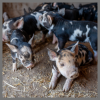
Ochratoxin A (OTA) is a potent toxin frequently present in animal feeds, which accumulates in the animal tissues for human consumption. This results in critical animal welfare issues, as well as food safety issues. To the best of our knowledge, the present study is the first to show that OTA can be degraded by an enzyme supplemented with pigs’ feed.
Read more
-

Jul
06
Interpretive Summary: Comparison of methods for the effective evaluation of the energy content of poultry byproduct meal for beagles

The scale of the global pet food market is expanding daily, but there are relatively few evaluations that have been performed on many of the common ingredients in pet food recently. This study compares direct, difference, and regression methods of evaluating the effects of the energy values of poultry byproduct meal (PBM), which is commonly used in beagle foods.
Read more
-

Jul
06
Interpretive Summary: Cell adhesion function was altered during the seasonal regression of the seminiferous epithelium in the mink species Neovison vison

Here, we report for the first time the molecular mechanisms of testicular regression in mink. Our results, together with studies on other animals’ characteristic reproductive features, identify a cluster of events crucial to the seminiferous epithelium regression process in mammalian seasonal breeders and highlight perspectives unique to the mink.
Read more
-

Jun
29
Interpretive Summary: USTR calls for dispute settlement consultations over Mexican GMO corn restrictions
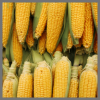
The United States Trade Representative Katherine Tai has requested dispute settlement consultations with Mexico under the United States-Mexico-Canada Agreement (USMCA). These consultations regard certain Mexican measures concerning products of agricultural biotechnology.
Read more
-

Jun
29
Interpretive Summary: The EATS Act is introduced
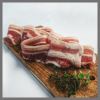
In response to the Supreme Court’s decision on California Proposition 12 (Prop 12), The Ending Agricultural Trade Suppression (EATS) Act was introduced to prevent states like California from regulating farmers and ranchers nationwide.
Read more
-

Jun
29
Interpretive Summary: Texas Governor signs meat labelling law

Texas Governor Greg Abbott recently signed a bill into law that will require labels for meat alternatives and lab-grown meat sold in the state. The law directs plant-based and other alternative products to have clarifying verbiage appear next to the label with similar size text as the product being sold.
Read more
-

Jun
29
Interpretive Summary: Supreme Court rules on WOTUS

The United States Supreme Court recently published a ruling on Sackett v. Environmental Protection Agency, involving the “Waters of the United States” (WOTUS) under the Biden Administration’s revised Clean Water Act. The ruling limits the authority of the Environmental Protection Agency (EPA) in regulating certain bodies of water that qualify as WOTUS. This is a huge win for farmers and landowners.
Read more
-

Jun
29
Interpretive Summary: Study finds carbon footprint of lab-grown beef might be worse than real beef
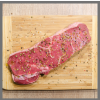
A new preprint article from researchers at The University of California, Davis (UC Davis) has found that lab-grown meat’s environmental impact is likely to be higher than retail beef based on current and near-term production methods. Lab-grown meat is growing in popularity. It is cultured from animal cells and is often thought to be more environmentally friendly than beef due to the need for less land, water, and greenhouse gases compared to raising cattle.
Read more
-

Jun
29
Interpretive Summary: SAVE Act is introduced

The Safeguarding American Value-Added Exports Act (SAVE Act) was recently introduced in the House and Senate, to protect American food products from foreign trade practices.
Read more
-

Jun
29
Interpretive Summary: New bill would support ag education at community colleges

A new bill introduced by Senators John Hickenlooper (D-CO), Deb Fischer (R-NE), Amy Klobuchar (D-MN), Todd Young (R-IN), Tammy Baldwin (D-WI), and Roger Wicker (R-MS) would fund community college workforce training, education, and research programs in agriculture.
Read more
-

Jun
29
Interpretive Summary: NAMI launches the Protein PACT Academic Advisory Council
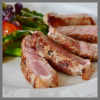
The North American Meat Institute (Meat Institute) recently announced the launch of the Protein PACT Academic Advisory Council. The advisory council was formed to advise on research priorities and the latest evidence related to meat production and consumption.
Read more
-

Jun
29
Interpretive Summary: Lawmakers request funding for land-grant institutions

House Ag Committee Chair Glenn “GT” Thompson (R-PA) and Ranking Member David Scott (D-GA) recently sent an open letter to 18 state governors calling for increased funding for 1890 Land-Grand Institutions. The 1890 land-grant institutions are historically black universities that were established under the Second Morrill Act of 1890. The United States of Agriculture’s (USDA’s) National Institute of Food and Agriculture’s (NIFA's) 1890 land-grant institutions programs are intended to strengthen research, extension, and teaching in the food and agricultural sciences by building the institutional capacities of the 1890 Institutions.
Read more
-

Jun
29
Interpretive Summary: FMMO hearing set for August

The United States Department of Agriculture (USDA) has set August 23, 2023, as the date for the hearing to revise the Federal Milk Marketing Order (FMMO) system. If all goes to plan, an updated FMMO system could be actively benefiting farmers in late 2024.
Read more
-

Jun
22
Interpretive Summary: Nutrient profile, amino acid digestibility, true metabolizable energy, and indispensable amino acid scoring of whole hemp seeds for use in canine and feline diets

Hemp products have become popular in the human food and health industry over the past few years. Due to this, a growing interest in using hemp ingredients in animal products has developed as well.
Read more
-

Jun
22
Interpretive Summary: The 13C-bicarbonate technique as a tool for measurement of energy expenditure in overweight dogs undergoing body weight reduction and the effect of different dietary composition

The most common nutritional disorder in dogs is overweight, and knowledge about dogs’ energy requirement is therefore important to adjust daily feed allowance. Changes in body weight may affect energy expenditure (EE) and, thereby, energy requirement. This study aimed to measure such potential changes under resting conditions in overweight dogs.
Read more
-

Jun
22
Interpretive Summary: Effects of five carbohydrate sources on cat diet digestibility, postprandial glucose, insulin response, and gut microbiomes

Pet obesity is becoming increasingly common and may have a negative impact on pet health. The exploration of measures to alleviate pet obesity is urgently needed.
Read more
-

Jun
22
Interpretive Summary: Short communication: Analysis of the nasal microbiota in newly received feedlot heifers according to subsequent incidence of bovine respiratory disease
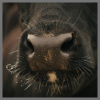
Bovine respiratory disease (BRD) is the most common disease in feedlot cattle and costs the US cattle industry more than $2 billion annually. Such economical losses include mortality, wasted feed resources, pharmaceutical inputs, and decreased performance of morbid cattle.
Read more
-

Jun
22
Interpretive Summary: Measuring welfare in rearing piglets: test–retest reliability of selected animal-based indicators
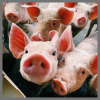
The present study tested selected animal welfare indicators from different welfare assessment protocols, such as the Welfare Quality protocol (WQP) for pigs, with regard to test–retest reliability (TRR), consistency over time, in an on-farm study on rearing pigs. The WQP is based on the four welfare principles: 1) “good feeding”, 2) “good housing”, 3) “good health”, and 4) “appropriate behavior”, which are assessed by different welfare indicators.
Read more
-

Jun
22
Interpretive Summary: Evaluating a novel consensus bacterial 6-phytase variant on growth performance of broilers fed U.S. commercial diets deficient in nutrients and energy through 63 days of age
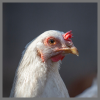
As any reduction in dietary nutrients can negatively impact broiler productivity mitigating these effects is imperative. Dietary reductions in minerals, amino acids, and energy can all result in decreased growth and performance.
Read more
 JulInterpretive Summary: Effects of starch sources varying in particle sizes on ruminal fermentation, nutrient flow, starch digestibility, and lactation performance of dairy cows
JulInterpretive Summary: Effects of starch sources varying in particle sizes on ruminal fermentation, nutrient flow, starch digestibility, and lactation performance of dairy cows Starch digestibility varies greatly depending on starch source (SS), grain processing, and potentially interactions between these factors. Four ruminally cannulated lactating Holstein cows were fed a total mixed ration that varied in SS and particle sizes (PS) to evaluate the interactions between SS and PS on ruminal fermentation, nutrient flow, starch digestibility, and lactation performance of dairy cows.
Starch digestibility varies greatly depending on starch source (SS), grain processing, and potentially interactions between these factors. Four ruminally cannulated lactating Holstein cows were fed a total mixed ration that varied in SS and particle sizes (PS) to evaluate the interactions between SS and PS on ruminal fermentation, nutrient flow, starch digestibility, and lactation performance of dairy cows. JulInterpretive Summary: Enzymatic degradation of ochratoxin A in the gastrointestinal tract of piglets
JulInterpretive Summary: Enzymatic degradation of ochratoxin A in the gastrointestinal tract of piglets Ochratoxin A (OTA) is a potent toxin frequently present in animal feeds, which accumulates in the animal tissues for human consumption. This results in critical animal welfare issues, as well as food safety issues. To the best of our knowledge, the present study is the first to show that OTA can be degraded by an enzyme supplemented with pigs’ feed.
Ochratoxin A (OTA) is a potent toxin frequently present in animal feeds, which accumulates in the animal tissues for human consumption. This results in critical animal welfare issues, as well as food safety issues. To the best of our knowledge, the present study is the first to show that OTA can be degraded by an enzyme supplemented with pigs’ feed. JulInterpretive Summary: Comparison of methods for the effective evaluation of the energy content of poultry byproduct meal for beagles
JulInterpretive Summary: Comparison of methods for the effective evaluation of the energy content of poultry byproduct meal for beagles The scale of the global pet food market is expanding daily, but there are relatively few evaluations that have been performed on many of the common ingredients in pet food recently. This study compares direct, difference, and regression methods of evaluating the effects of the energy values of poultry byproduct meal (PBM), which is commonly used in beagle foods.
The scale of the global pet food market is expanding daily, but there are relatively few evaluations that have been performed on many of the common ingredients in pet food recently. This study compares direct, difference, and regression methods of evaluating the effects of the energy values of poultry byproduct meal (PBM), which is commonly used in beagle foods. JulInterpretive Summary: Cell adhesion function was altered during the seasonal regression of the seminiferous epithelium in the mink species Neovison vison
JulInterpretive Summary: Cell adhesion function was altered during the seasonal regression of the seminiferous epithelium in the mink species Neovison vison Here, we report for the first time the molecular mechanisms of testicular regression in mink. Our results, together with studies on other animals’ characteristic reproductive features, identify a cluster of events crucial to the seminiferous epithelium regression process in mammalian seasonal breeders and highlight perspectives unique to the mink.
Here, we report for the first time the molecular mechanisms of testicular regression in mink. Our results, together with studies on other animals’ characteristic reproductive features, identify a cluster of events crucial to the seminiferous epithelium regression process in mammalian seasonal breeders and highlight perspectives unique to the mink. JunInterpretive Summary: USTR calls for dispute settlement consultations over Mexican GMO corn restrictions
JunInterpretive Summary: USTR calls for dispute settlement consultations over Mexican GMO corn restrictions The United States Trade Representative Katherine Tai has requested dispute settlement consultations with Mexico under the United States-Mexico-Canada Agreement (USMCA). These consultations regard certain Mexican measures concerning products of agricultural biotechnology.
The United States Trade Representative Katherine Tai has requested dispute settlement consultations with Mexico under the United States-Mexico-Canada Agreement (USMCA). These consultations regard certain Mexican measures concerning products of agricultural biotechnology. JunInterpretive Summary: The EATS Act is introduced
JunInterpretive Summary: The EATS Act is introduced In response to the Supreme Court’s decision on California Proposition 12 (Prop 12), The Ending Agricultural Trade Suppression (EATS) Act was introduced to prevent states like California from regulating farmers and ranchers nationwide.
In response to the Supreme Court’s decision on California Proposition 12 (Prop 12), The Ending Agricultural Trade Suppression (EATS) Act was introduced to prevent states like California from regulating farmers and ranchers nationwide. JunInterpretive Summary: Texas Governor signs meat labelling law
JunInterpretive Summary: Texas Governor signs meat labelling law Texas Governor Greg Abbott recently signed a bill into law that will require labels for meat alternatives and lab-grown meat sold in the state. The law directs plant-based and other alternative products to have clarifying verbiage appear next to the label with similar size text as the product being sold.
Texas Governor Greg Abbott recently signed a bill into law that will require labels for meat alternatives and lab-grown meat sold in the state. The law directs plant-based and other alternative products to have clarifying verbiage appear next to the label with similar size text as the product being sold. JunInterpretive Summary: Supreme Court rules on WOTUS
JunInterpretive Summary: Supreme Court rules on WOTUS The United States Supreme Court recently published a ruling on Sackett v. Environmental Protection Agency, involving the “Waters of the United States” (WOTUS) under the Biden Administration’s revised Clean Water Act. The ruling limits the authority of the Environmental Protection Agency (EPA) in regulating certain bodies of water that qualify as WOTUS. This is a huge win for farmers and landowners.
The United States Supreme Court recently published a ruling on Sackett v. Environmental Protection Agency, involving the “Waters of the United States” (WOTUS) under the Biden Administration’s revised Clean Water Act. The ruling limits the authority of the Environmental Protection Agency (EPA) in regulating certain bodies of water that qualify as WOTUS. This is a huge win for farmers and landowners. JunInterpretive Summary: Study finds carbon footprint of lab-grown beef might be worse than real beef
JunInterpretive Summary: Study finds carbon footprint of lab-grown beef might be worse than real beef A new preprint article from researchers at The University of California, Davis (UC Davis) has found that lab-grown meat’s environmental impact is likely to be higher than retail beef based on current and near-term production methods. Lab-grown meat is growing in popularity. It is cultured from animal cells and is often thought to be more environmentally friendly than beef due to the need for less land, water, and greenhouse gases compared to raising cattle.
A new preprint article from researchers at The University of California, Davis (UC Davis) has found that lab-grown meat’s environmental impact is likely to be higher than retail beef based on current and near-term production methods. Lab-grown meat is growing in popularity. It is cultured from animal cells and is often thought to be more environmentally friendly than beef due to the need for less land, water, and greenhouse gases compared to raising cattle. JunInterpretive Summary: SAVE Act is introduced
JunInterpretive Summary: SAVE Act is introduced The Safeguarding American Value-Added Exports Act (SAVE Act) was recently introduced in the House and Senate, to protect American food products from foreign trade practices.
The Safeguarding American Value-Added Exports Act (SAVE Act) was recently introduced in the House and Senate, to protect American food products from foreign trade practices. JunInterpretive Summary: New bill would support ag education at community colleges
JunInterpretive Summary: New bill would support ag education at community colleges A new bill introduced by Senators John Hickenlooper (D-CO), Deb Fischer (R-NE), Amy Klobuchar (D-MN), Todd Young (R-IN), Tammy Baldwin (D-WI), and Roger Wicker (R-MS) would fund community college workforce training, education, and research programs in agriculture.
A new bill introduced by Senators John Hickenlooper (D-CO), Deb Fischer (R-NE), Amy Klobuchar (D-MN), Todd Young (R-IN), Tammy Baldwin (D-WI), and Roger Wicker (R-MS) would fund community college workforce training, education, and research programs in agriculture. JunInterpretive Summary: NAMI launches the Protein PACT Academic Advisory Council
JunInterpretive Summary: NAMI launches the Protein PACT Academic Advisory Council The North American Meat Institute (Meat Institute) recently announced the launch of the Protein PACT Academic Advisory Council. The advisory council was formed to advise on research priorities and the latest evidence related to meat production and consumption.
The North American Meat Institute (Meat Institute) recently announced the launch of the Protein PACT Academic Advisory Council. The advisory council was formed to advise on research priorities and the latest evidence related to meat production and consumption. JunInterpretive Summary: Lawmakers request funding for land-grant institutions
JunInterpretive Summary: Lawmakers request funding for land-grant institutions House Ag Committee Chair Glenn “GT” Thompson (R-PA) and Ranking Member David Scott (D-GA) recently sent an open letter to 18 state governors calling for increased funding for 1890 Land-Grand Institutions. The 1890 land-grant institutions are historically black universities that were established under the Second Morrill Act of 1890. The United States of Agriculture’s (USDA’s) National Institute of Food and Agriculture’s (NIFA's) 1890 land-grant institutions programs are intended to strengthen research, extension, and teaching in the food and agricultural sciences by building the institutional capacities of the 1890 Institutions.
House Ag Committee Chair Glenn “GT” Thompson (R-PA) and Ranking Member David Scott (D-GA) recently sent an open letter to 18 state governors calling for increased funding for 1890 Land-Grand Institutions. The 1890 land-grant institutions are historically black universities that were established under the Second Morrill Act of 1890. The United States of Agriculture’s (USDA’s) National Institute of Food and Agriculture’s (NIFA's) 1890 land-grant institutions programs are intended to strengthen research, extension, and teaching in the food and agricultural sciences by building the institutional capacities of the 1890 Institutions. JunInterpretive Summary: FMMO hearing set for August
JunInterpretive Summary: FMMO hearing set for August The United States Department of Agriculture (USDA) has set August 23, 2023, as the date for the hearing to revise the Federal Milk Marketing Order (FMMO) system. If all goes to plan, an updated FMMO system could be actively benefiting farmers in late 2024.
The United States Department of Agriculture (USDA) has set August 23, 2023, as the date for the hearing to revise the Federal Milk Marketing Order (FMMO) system. If all goes to plan, an updated FMMO system could be actively benefiting farmers in late 2024. JunInterpretive Summary: Nutrient profile, amino acid digestibility, true metabolizable energy, and indispensable amino acid scoring of whole hemp seeds for use in canine and feline diets
JunInterpretive Summary: Nutrient profile, amino acid digestibility, true metabolizable energy, and indispensable amino acid scoring of whole hemp seeds for use in canine and feline diets Hemp products have become popular in the human food and health industry over the past few years. Due to this, a growing interest in using hemp ingredients in animal products has developed as well.
Hemp products have become popular in the human food and health industry over the past few years. Due to this, a growing interest in using hemp ingredients in animal products has developed as well. JunInterpretive Summary: The 13C-bicarbonate technique as a tool for measurement of energy expenditure in overweight dogs undergoing body weight reduction and the effect of different dietary composition
JunInterpretive Summary: The 13C-bicarbonate technique as a tool for measurement of energy expenditure in overweight dogs undergoing body weight reduction and the effect of different dietary composition The most common nutritional disorder in dogs is overweight, and knowledge about dogs’ energy requirement is therefore important to adjust daily feed allowance. Changes in body weight may affect energy expenditure (EE) and, thereby, energy requirement. This study aimed to measure such potential changes under resting conditions in overweight dogs.
The most common nutritional disorder in dogs is overweight, and knowledge about dogs’ energy requirement is therefore important to adjust daily feed allowance. Changes in body weight may affect energy expenditure (EE) and, thereby, energy requirement. This study aimed to measure such potential changes under resting conditions in overweight dogs. JunInterpretive Summary: Effects of five carbohydrate sources on cat diet digestibility, postprandial glucose, insulin response, and gut microbiomes
JunInterpretive Summary: Effects of five carbohydrate sources on cat diet digestibility, postprandial glucose, insulin response, and gut microbiomes Pet obesity is becoming increasingly common and may have a negative impact on pet health. The exploration of measures to alleviate pet obesity is urgently needed.
Pet obesity is becoming increasingly common and may have a negative impact on pet health. The exploration of measures to alleviate pet obesity is urgently needed. JunInterpretive Summary: Short communication: Analysis of the nasal microbiota in newly received feedlot heifers according to subsequent incidence of bovine respiratory disease
JunInterpretive Summary: Short communication: Analysis of the nasal microbiota in newly received feedlot heifers according to subsequent incidence of bovine respiratory disease Bovine respiratory disease (BRD) is the most common disease in feedlot cattle and costs the US cattle industry more than $2 billion annually. Such economical losses include mortality, wasted feed resources, pharmaceutical inputs, and decreased performance of morbid cattle.
Bovine respiratory disease (BRD) is the most common disease in feedlot cattle and costs the US cattle industry more than $2 billion annually. Such economical losses include mortality, wasted feed resources, pharmaceutical inputs, and decreased performance of morbid cattle. JunInterpretive Summary: Measuring welfare in rearing piglets: test–retest reliability of selected animal-based indicators
JunInterpretive Summary: Measuring welfare in rearing piglets: test–retest reliability of selected animal-based indicators The present study tested selected animal welfare indicators from different welfare assessment protocols, such as the Welfare Quality protocol (WQP) for pigs, with regard to test–retest reliability (TRR), consistency over time, in an on-farm study on rearing pigs. The WQP is based on the four welfare principles: 1) “good feeding”, 2) “good housing”, 3) “good health”, and 4) “appropriate behavior”, which are assessed by different welfare indicators.
The present study tested selected animal welfare indicators from different welfare assessment protocols, such as the Welfare Quality protocol (WQP) for pigs, with regard to test–retest reliability (TRR), consistency over time, in an on-farm study on rearing pigs. The WQP is based on the four welfare principles: 1) “good feeding”, 2) “good housing”, 3) “good health”, and 4) “appropriate behavior”, which are assessed by different welfare indicators. JunInterpretive Summary: Evaluating a novel consensus bacterial 6-phytase variant on growth performance of broilers fed U.S. commercial diets deficient in nutrients and energy through 63 days of age
JunInterpretive Summary: Evaluating a novel consensus bacterial 6-phytase variant on growth performance of broilers fed U.S. commercial diets deficient in nutrients and energy through 63 days of age As any reduction in dietary nutrients can negatively impact broiler productivity mitigating these effects is imperative. Dietary reductions in minerals, amino acids, and energy can all result in decreased growth and performance.
As any reduction in dietary nutrients can negatively impact broiler productivity mitigating these effects is imperative. Dietary reductions in minerals, amino acids, and energy can all result in decreased growth and performance.



